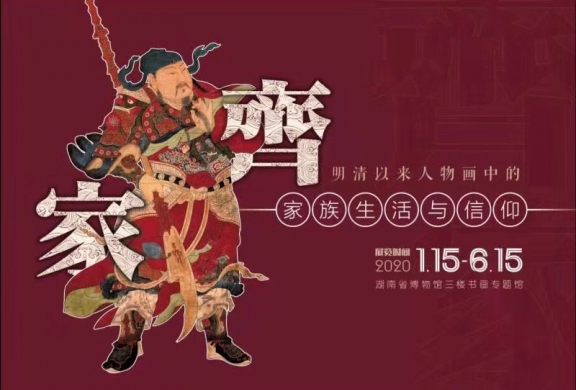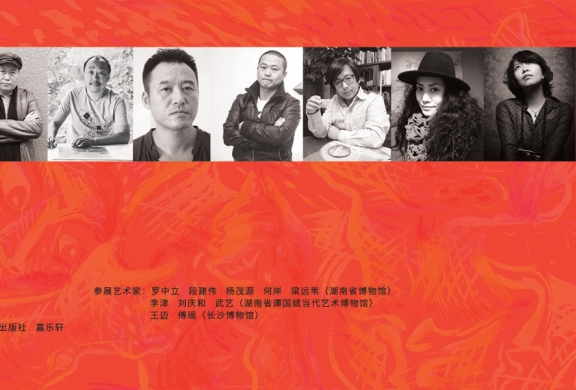Past Exhibitions
Exhibition of the Sanxitang Shiqubaoji Model Calligraphy3rd Floor 2021.01.19 - 2021.04.22 The Sanxitang Model Calligraphy was carved in 1747. Emperor Qianlong ordered officials including Liang Shizheng and Jiang Pu to carefully select from, copy and carve the famous calligraphy works of various dynasties in Shiqubaoji, which took them 7 years. The model calligraphy got its name because it contains Emperor Qianlong's three favorite calligraphy works – A Sunny Scene After a Quick Snow by Wang Xizhi, Mid-Autumn by Wang Xianzhi and Letter to Boyuan by Wang Xianzhi – all of them were collected in Sanxitang, the West Warm Room of Yangxin Hall. After the Sanxitang Model Calligraphy was engraved, Emperor Qianlong specially built Yuegulou Building in Beihai Park to store these stone carvings. He also entitled “Yan Yun Jin Tai” (calligraphy of different forms) and a seven-character poem, which shows how much they were treasured. The Sanxitang Model Calligraphy contains works from the Wei and Jin dynasties to the end of the Ming Dynasty, including almost all the excellent calligraphy scripts in the Ming Dynasty, such as Tingyunguantie and Yugangzhaitie. Some of the original scripts have been destroyed or lost, such as Zhong Yao’s Jianjizhibiao, Wang Xianzhi’s Songlitie, and Zhao Mengfu’s Wanshanfu. Fortunately, with the Sanxitang Model Calligraphy, we can see the copies of them. With numerous volumes, strict selections, excellent carving copies and large scales, the Sanxitang Model Calligraphy is of great historical, artistic and academic value. With a collection of works from 135 masters, 340 pieces of calligraphy, more than 200 prefaces and postscripts, over 1600 seals, 32 classifications, 495 pieces of stone carvings and more than 90,000 characters of inscriptions, it is one of the best calligraphy stone carvings. Hunan Museum has a rich collection of paintings, calligraphy and inscriptions. At the beginning of the new year, we carefully selected the collection of the Sanxitang Model Calligraphy series and planned this exhibition for visitors, from whom valuable suggestions are welcomed. |
Enjoy the Elegance at Leisure: the Slow Life of the People in the Song DynastyNo.2 Special Exhibition Hall, 1F 2020.10.15 - 2021.01.15 Most of the literati and scholars of the Song Dynasty were well educated in poetry and books, and had the desire to both help the world and be virtuous. The peace and humility in Confucianism, the purity and naturalness in Taoism, and the philosophy of finding one’s true self in Buddhist, enabled them to live with the ease of mind whether in the times of the success or frustration. They did not pursue power and wealth; instead, they valued the taste and entertainment of life while knowing the meaning of their lives. As senior officials, they would "worry first and enjoy later", displaying their ambition of governing the country and unifying the world; in the face of the ups and downs of life and career, they would "not be pleased by external gains nor saddened by personal losses", but rather, they pursued inner peace. In their spare time, they would relax their mind, indulge themselves in nature and enjoy and contemplate life. Playing the Guqin and chess, writing and painting, drinking tea and wine, arranging flowers and burning incense, and gathering to appreciate the antiques, as elegant life paradigms and cultural phenomena, have been admired and emulated by generations to come. The literati and scholars of the Song Dynasty had lived up to our ideal model of life more than a thousand years ago. |
Ancient Peru Civilization: Exploring the Origin of the Inca EmpireNo.1 Exhibition Hall, 1st Floor 2020.09.23 - 2021.01.05 In the far west of South America, on the other side of the Pacific Ocean, lies a mysterious country called Peru, where the Andes Mountains run from the north to the south, forming a unique natural ecological environment that has nurtured generations of indigenous Indians and later immigrants, creating a splendid and fascinating ancient civilization. Ancient civilization in Peru has a long history. Since the arrival of the Asian Mongoloids across the Bering Strait 13,000 years ago, it had been developing over a long period of time and eventually culminated in the establishment of the Inca Empire, which marks the pinnacle of the development of ancient Peruvian civilization and that of the Andean region as a whole. Although the Inca Empire, with Peru at its center, was lost to the Spanish colonial invaders in the 16th century, the influence it has left on the history of human civilization and the memory of the Indians about their their ancestors, will endure. To this day, in the majestic megalithic structures, exquisite textiles, colorful pottery, and exquisite gold and silver objects, we can still see the magnanimity and courage of the founders of Peruvian civilization, and feel the resilience and spirituality of their people, as well as their devotion to their gods and spirit. Let's travel through time and space. Through the 157 pieces of artifacts in the exhibition, let’s experience the brilliance and splendor of Peru's ancient civilization and discover the exciting Inca Empire... |
From Renaissance to Impressionism: Five Hundred Years of European PaintingsNo.2 Exhibition Hall, 2nd Floor 2020.05.29 - 2020.09.13 In the exhibition “From Renaissance to Impressionism: Five Hundred Years of European Paintings”, 60 European masters’ paintings from the Indianapolis Museum of Art at Newfields were particularly selected. The 60 chosen artworks, with extraordinary techniques and significant artistic value, offer an overview of European paintings from the 14th to the 19th century. Works of the most eminent European masters such as Titian, Rubens, Rembrandt, El Greco, Goya, Turner, Monet, Gauguin, Renoir, etc., are included. Artworks of the exhibition cover different geological regions including Italy, the Netherlands, England and France, and contain principal phases and major schools of European art history including the Renaissance, Baroque, Rococo, Naturalism and Classicism, Neoclassicism, Romanticism, Realism and Impressionism. During this historical period (14th to 19th century), the European economy grew at an unprecedented rate, the society were under radical changes, and the art of painting witnessed major evolution from classics to modernism, with its historical meaning and profound influence lasting till today. |
Family Life and Beliefs in the Figure Paintings Since the Ming and Qing Dynasties3rd Floor 2020.01.15 - 2020.06.15 |
Experience and Strategy: the Art Changsha 2019No.1 and No.2 Special Exhibition Hall,1F 2019.12.07 - 2020.02.06 At 2:00 p.m. on December 7, 2019, “Experience and Strategy: the Art Changsha 2019” was officially unveiled in the Art Hall, 1st Floor, Hunan Museum. Since 2007, Hunan Museum has held six “Art Changsha” consecutively, and this year ushers in the 7th “Art Changsha”. This is an “atypical cultural landscape” among Chinese major museums. In the 21st century, the functions and missions of a museum began to shift greatly due to the innovations of ideas and technology. The position of museums as cultural hubs has been reemphasized and reinforced. From the perspectives of both time and space, museums are no longer limited to “collecting history”, but are endowed with a value orientation of connecting reality and the future. Therefore, it is essentially an exploration of its functions and the boundaries as well as its relations with the contemporary society for a museum to hold a contemporary art exhibition. This exhibition, featured by an integration of academic and art, apparently reflects the fields of “contradiction” between historical relics and contemporary art. In nature, it is a deep conversation that is based on rich historical materials in the museum and digs into the history and contemporary arts. By implementing the new concepts and ideas of “enlivening” the relics, “merging” the arts into life, and “inviting” the audience to join, this exhibition will further promote cultural confidence, improve public culture and artistic literacy and contribute to keeping up with people’s ever-growing needs for a better life! |








